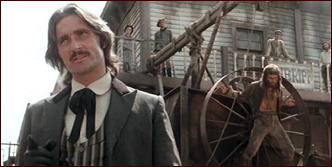REVIEWED BY DAVID VINEYARD:

THE NINA B. AFFAIR. Bavaria-Filmkunst Verleih, France-Germany, 1961. Originally released as Affäre Nina B and L’affaire Nina B. Nadjia Tiller, Pierre Brasseur, Walter Giller. Screenplay by Roger Nimier, Jacques Roberts and Robert Siodmak, who also directed. Based on the novel by Johannes Maria Simmel.
The irony about the work of Johannes Maria Simmel, an international bestselling Austrian author, chemical engineer, and English translator, is that virtually no one in the United States ever heard of him until writers such as Robert Ludlum and Frederick Forsyth came to the fore of popular spy fiction in the seventies and eighties and his work began to appear here in mass market paperbacks published only as by Simmel (much less foreign sounding than Johannes Maria) and proclaimed to be in the tradition of Ludlum and Forsyth, when he was in reality a contemporary of Helen MacInnes (who his Cold War novels resemble more than Ludlum or Forsyth), Sarah Gainham, Paul Hyde Bonner, and Martha Albrand.

Truth was, Simmell had been writing this sort of thing since 1949 over two decades before Ludlum or Forsyth stuck their hands in, and was far less a thriller writer than a novelist whose work deals with crime and espionage and his personal belief in pacifism, particularly in the aftermath of WW II and the Cold War with often autobiographical references (the antagonist in Nina B. has the same middle name as Simmel) in books like I Confess, Double Agent — Triple Cross, The Caesar Code, and Cain ’67, and who had sixteen books filmed beginning in 1960 as well as penning numerous original screenplays and adaptations. His career and success outside of the American publishing world was quite extensive with twenty-nine books published between 1949 and 1999.
In addition his devotion to pacifism led to numerous awards over his career, including those from his native country and the UN, as well as his being one of the bestselling authors in the world.
Among those works was The Nina B. Affair, which was filmed in Germany in 1961, pre-Bond, directed by noted film noir director Robert Siodmak (who previously filmed Simmel’s Mein Schulfreund in 1960), brother of screenwriter Curt “Donovan’s Brain†Siodmak, Robert returning to Germany and reinventing himself as a director of spectacles, Westerns, and dramas when his American career faltered.

The plot of the 1958 novel borrows pretty freely from both Citizen Kane and Orson Welles’ novel and film Mr. Arkadan, which both owed something to Eric Ambler’s Coffin for Dimitrios, if truth be told, and a Tracy and Hepburn picture Keeper of the Flame based on an I.A.R. Wylie novel, in that it opens at the funeral of the mysterious financier Michel Maria Berrera (Pierre Brasseur), one of those able criminal types beloved by Eric Ambler, in Wiesbaden, West Germany.
The story is told in flashback by Antoine Holden (Walter Giller), a young man just out of prison whose taciturn attitude Berrera admired and who becomes involved with him, and slowly unwinds the twisty tale of a high stakes blackmailer and corrupt businessman, who it is suggested is much darker than we ever see.
“Nothing seems strange to me, I am open to everything.â€
Shot in black and white and using many noir touches from the camera angles, wet night streets, isolated shots of the protagonist, and such it’s difficult not to see this as Euro-noir what with the flashback story structure and the dubious nature of most of the characters including the hero and heroine.

Holden first arrives at Berrera’s house as the ambulance has just taken away Berrera’s wife, Nina (Nadjia Tiller) who has just attempted suicide. Berrera hires Holden on the spot and from the beginning he is involved in his intrigues including an urgent trip into East Germany for a briefcase full of papers Berrera is desperate to get so he can blackmail a trio of Nazi war criminals now well to do West German businessmen out of a deal they are making with an emerging African nation.
Berrera ends up in jail with everyone after the papers and Holden faced with violence and bribes and Berrera’s too smooth lawyer, as well as falling for Nina, once Berrera’s secretary, who wants to escape his casual cruelty and overbearing manner.
True to the book, there are no easy answers in the film. Holden and Nina’s brief affair is doomed by her hatred and fear of Berrera, with everything tumbling out of control when Berrera gets out of jail and makes his last big gamble to win the biggest prize of all, control of the African contracts.

Some may find the finale a bit stark, but it is a great last shot and a perfect way to end the dark tale about people who are no more innocent than they have to be, caught in the web of a spider whose morals are as dubious as his weak heart, and ends on a perfect ironic note
Despite a few touches, this is more drama than thriller or suspense, but it clearly benefits from Sidomak’s own American forays into noir storytelling. Acting honors primarily go to Brasseur, who plays Berrera as a fat spider at once threatening and cajoling, generous and ruthless, who plays god with the emotions and feelings of everyone around him, a more subtle James Bond villain, both attractive and evil, and more than deserving of his ironic fate.


